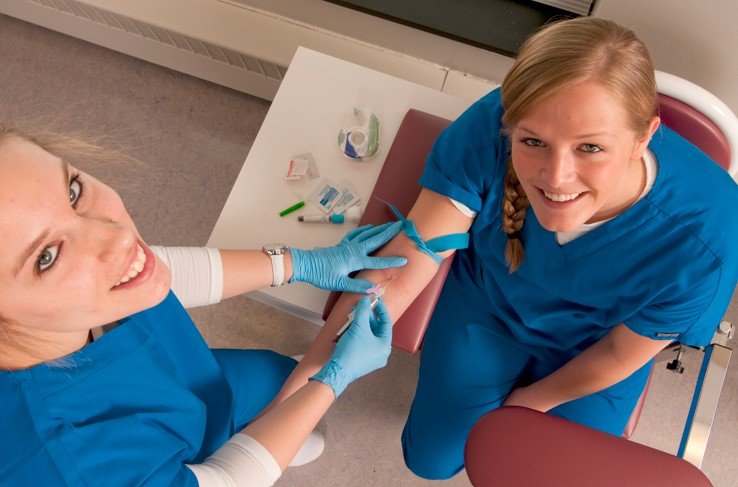Challenges and Strategies for Integrating Wearable Devices in Hospital Phlebotomy Processes
Summary
- Hospitals are facing challenges in integrating wearable devices into their phlebotomy processes due to various reasons such as regulatory hurdles, interoperability issues, and data security concerns.
- Despite the potential benefits of wearable devices in improving healthcare delivery and patient outcomes, hospitals must address these challenges to effectively incorporate them into their supply and equipment management systems.
- By implementing strategies to overcome these obstacles, hospitals can enhance their phlebotomy processes, streamline workflows, and ultimately provide better quality care to patients.
Introduction
In recent years, wearable devices have become increasingly popular in the healthcare industry for their ability to collect real-time data and facilitate remote monitoring of patients. These devices have the potential to revolutionize the way hospitals manage their phlebotomy processes, allowing for more efficient and accurate blood sample collection. However, integrating wearable devices into existing hospital supply and equipment management systems poses several challenges that need to be addressed.
Challenges Hospitals Face in Integrating Wearable Devices
Regulatory Hurdles
One of the major challenges hospitals face in integrating wearable devices into their phlebotomy processes is navigating the complex regulatory landscape. The Food and Drug Administration (FDA) has strict Regulations in place for medical devices, including wearables, to ensure patient safety and device efficacy. Hospitals must ensure that any wearable devices used in their phlebotomy processes are compliant with FDA Regulations, which can be a time-consuming and costly process.
Interoperability Issues
Another challenge hospitals face is interoperability issues between wearable devices and existing healthcare systems. Many wearables use proprietary software and data formats that may not be compatible with hospital information systems, making it difficult to integrate data collected from these devices into Electronic Health Records (EHRs) or other clinical systems. This lack of interoperability can hinder communication between Healthcare Providers and impact the accuracy and timeliness of patient care.
Data Security Concerns
Data security is a top concern for hospitals when it comes to integrating wearable devices into their phlebotomy processes. Wearable devices often collect sensitive patient data, such as Blood Glucose levels or heart rate, that must be protected to comply with privacy Regulations like the Health Insurance Portability and Accountability Act (HIPAA). Hospitals must implement robust security measures to safeguard this data from breaches or unauthorized access, which can be challenging given the diverse and constantly evolving nature of wearable technologies.
Strategies to Overcome These Challenges
Collaboration with Device Manufacturers
One strategy hospitals can employ to overcome the challenges of integrating wearable devices into their phlebotomy processes is to collaborate closely with device manufacturers. By working together, hospitals and manufacturers can ensure that wearable devices meet regulatory requirements and are designed with interoperability and data security in mind. This collaboration can also help hospitals stay informed about the latest advancements in wearable technology and tailor their phlebotomy processes to incorporate these devices effectively.
Investing in Staff Training
Training healthcare staff on how to use wearable devices properly is essential for successful integration into phlebotomy processes. Hospitals should invest in comprehensive training programs that educate staff on the features and functionalities of various wearables, as well as best practices for data collection and interpretation. By equipping staff with the necessary skills and knowledge, hospitals can maximize the benefits of wearable devices and optimize their phlebotomy workflows.
Implementing Robust Data Security Measures
To address data security concerns, hospitals must implement robust measures to protect patient data collected from wearable devices. This includes encrypting data transmissions, restricting access to sensitive information, and regularly auditing security protocols to identify and address vulnerabilities. By prioritizing data security, hospitals can ensure Patient Confidentiality and compliance with regulatory requirements, fostering trust among patients and Healthcare Providers in the use of wearable devices.
Streamlining Workflows
Integrating wearable devices into phlebotomy processes can help hospitals streamline workflows and improve efficiency in blood sample collection. Hospitals should assess their current processes and identify areas where wearable devices can be integrated to automate tasks, reduce manual errors, and enhance data accuracy. By leveraging wearables to optimize phlebotomy workflows, hospitals can deliver faster and more reliable results, leading to better patient care outcomes.
Conclusion
While integrating wearable devices into phlebotomy processes presents several challenges for hospitals, these obstacles can be overcome through strategic planning and collaboration with stakeholders. By addressing regulatory hurdles, interoperability issues, and data security concerns, hospitals can successfully incorporate wearables into their supply and equipment management systems, ultimately enhancing the quality of care they provide to patients.

Disclaimer: The content provided on this blog is for informational purposes only, reflecting the personal opinions and insights of the author(s) on the topics. The information provided should not be used for diagnosing or treating a health problem or disease, and those seeking personal medical advice should consult with a licensed physician. Always seek the advice of your doctor or other qualified health provider regarding a medical condition. Never disregard professional medical advice or delay in seeking it because of something you have read on this website. If you think you may have a medical emergency, call 911 or go to the nearest emergency room immediately. No physician-patient relationship is created by this web site or its use. No contributors to this web site make any representations, express or implied, with respect to the information provided herein or to its use. While we strive to share accurate and up-to-date information, we cannot guarantee the completeness, reliability, or accuracy of the content. The blog may also include links to external websites and resources for the convenience of our readers. Please note that linking to other sites does not imply endorsement of their content, practices, or services by us. Readers should use their discretion and judgment while exploring any external links and resources mentioned on this blog.
